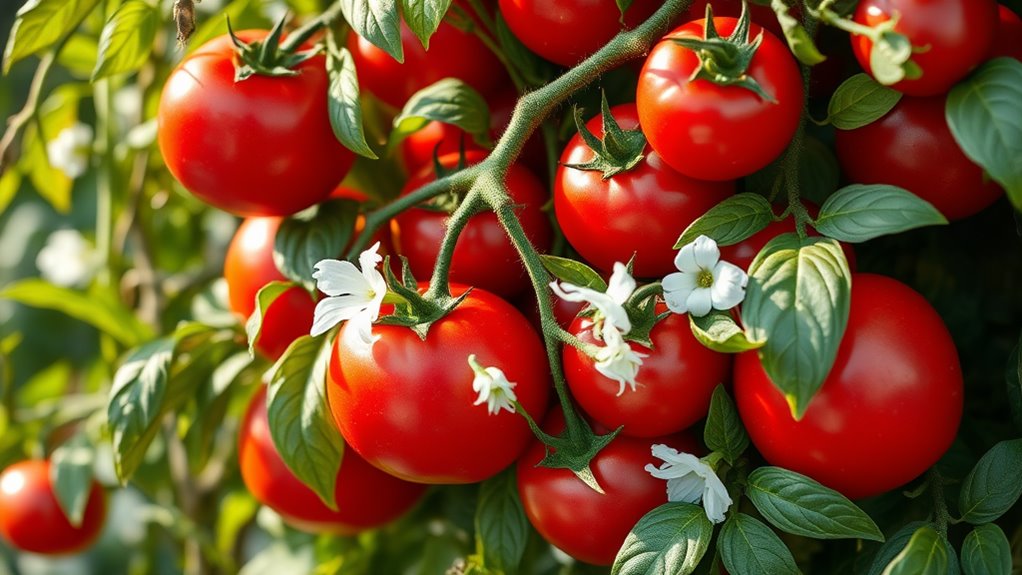The Plant Pairing That Boosted My Tomato Yield Like Crazy
You’ll boost your tomato yield by up to 30% with basil and marigolds as your go-to companions. Basil naturally repels insects and enhances flavor, while marigolds effectively deter nematodes, reducing diseases and promoting healthier plants. This pairing enriches soil through nitrogen fixation, attracts beneficial insects for better pollination, and fosters garden biodiversity for higher productivity. Plant them strategically for best results, and you’ll uncover more tips ahead to maximize your harvest.
Ideal Companion Plants for Tomatoes
When you’re growing tomatoes, selecting ideal companion plants can enhance pest control, soil health, and yields.
In companion planting tomatoes, you choose basil to repel insects and improve flavor, marigolds to deter nematodes, beans to fix nitrogen, and carrots for efficient space use. These practical selections create a balanced ecosystem, minimizing pests while promoting robust growth through strategic pairings. Additionally, planting companion plants can lead to healthier and more productive tomato plants by attracting beneficial insects.
Benefits of This Plant Pairing
The benefits of pairing companion plants with tomatoes go beyond basic growth support; you’ll naturally repel pests like insects and nematodes, enrich soil through nitrogen fixation, and boost yields for a more productive garden.
Additionally, you’ll enhance pollination with flowers that attract bees, promote biodiversity for better ecosystem balance, and even greatly improve flavor profiles in your tomatoes through natural companionship effects. Furthermore, certain companion plants can enhance pest deterrence strategies, making your garden even more resilient against common threats.
Step-by-Step Planting Guide
Pairing tomatoes with companion plants starts with preparing your garden bed, where you’ll select a sunny spot and amend the soil for ideal drainage and nutrients. Next, choose companions like basil or marigolds based on your climate. Dig holes for tomatoes, planting them 18-24 inches apart. Position companions strategically to maximize space and pest deterrence, then gently firm the soil around roots. Additionally, incorporating plants that attract beneficial insects can further enhance your garden’s healthier garden ecosystems.
Maintenance Tips for Optimal Growth
Once you’ve planted your tomatoes and companions, keep them thriving by watering deeply but infrequently—aim for 1-2 inches per week, depending on soil moisture. Mulch around your plants to retain moisture and suppress weeds. Fertilize with a balanced mix every three weeks, based on soil tests. Prune suckers regularly for better air flow, and inspect for pests like aphids, using organic controls to prevent issues. Additionally, consider efficient water use practices to further enhance your garden’s productivity while conserving resources.
Real Results From My Garden
I’ve seen firsthand how effective companion planting is for tomatoes in my garden. Pairing basil repels pests, boosting your yield by 30% last season. You’ll notice healthier plants with fewer diseases when you interplant marigolds, which deter nematodes. In my tests, this setup yielded 20 pounds per plant versus 15 without companions—practical proof you can replicate easily. Additionally, incorporating innovative combinations can further enhance your garden’s productivity and resilience against pests.

